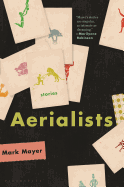
| Publisher: | Bloomsbury | |
| Genre: | Short Stories (single author), Fiction | |
| ISBN: | 9781635572179 | |
| Pub Date: | February 2019 | |
| Price: | $26 |
| Starred | Fiction |
by Mark Mayer
Cover iconography that depicts a circus and story titles like "The Clown," "The Ringmaster" and "Strongwoman" might lead readers to believe a series of big-top tales awaits them in Mark Mayer's excellent short story collection, Aerialists. That, much like a circus itself, is a bit of a ruse. Mayer's characters and settings are various and multifaceted, sometimes linking up to the proposed theme of the work, and sometimes downright undercutting it. It's best to ignore the theme altogether and jump into these nine poignant tales about what one owes others, and oneself.
"The Ringmaster," the final piece, is the most affecting, a somber story of a man nearing the end of his life with nothing to leave behind. Mick, a lifelong bachelor, has devoted himself to building an intricate model train set, hand-fashioning almost everything. He wakes up one day to realize it is finished, but with no one to give it to or to appreciate it, the model becomes a giant metaphor for his own impoverished life. That description might sound like Mayer closes on a sour note, but the author never loses his deep empathy for Mick, drawing the reader into his personal tragedy instead of reveling in it.
Mayer is interested in people whose connections to their friends and family are strained and tenuous, and his stories explore how easily those connections can be repaired or severed. Most of the pieces in Aerialists are tragedies in one way or another, but they always feel genuine, brought on by mistakes and failures of character. Mayer is well aware of how easily things can go wrong, and how precious it is when they go right. --Noah Cruickshank, director of communications, Forefront, Chicago, Ill.
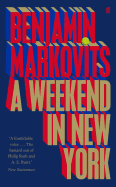
| Publisher: | Faber & Faber | |
| Genre: | Family Life, General, Literary, Fiction | |
| ISBN: | 9780571350087 | |
| Pub Date: | February 2019 | |
| Price: | $24 |
| Fiction |
by Benjamin Markovits
Featuring as its epigraph the first half of Tolstoy's well-known aphorism about happy and unhappy families, Benjamin Markovits's eighth novel is a wise anthropological study of this most intimate grouping of human life.
A Weekend in New York follows three generations of the Essinger family as they gather on the Upper West Side of Manhattan in the days leading up to tennis pro Paul's first-round match in the 2011 U.S. Open. Ranked No. 82 in the world and now approaching his mid-30s, Paul realizes his middling career is nearing an end. His older brother, Nathan--a Harvard law professor who's being considered for a job in the Obama Justice Department--has unhelpfully calculated his odds of winning at 1,200 to 1. So Paul divides his attention between the formidable task at hand and the urgency of making "the transition from player to former player gracefully and maybe even lucratively," with his girlfriend Dana, a former model, and their toddler son.
The Essingers are smart and acutely self-aware. Along with its precisely observant prose, the main pleasure of Markovits's novel lies in its firm grasp of the complex geometry of life in a family that "pushed you into arguing with them," a group of "talkers not touchers." For all their verbal sparring, Markovits pinpoints the bedrock affection that enables Essingers to unite fiercely against any outsider. Beneath the surface particularities of their lives, there's a universality to this portrait that will bring at least a rueful nod of recognition to any reader. --Harvey Freedenberg, freelance reviewer
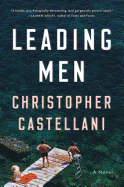
| Publisher: | Viking | |
| Genre: | Literary, Biographical, Fiction, LGBT, Gay | |
| ISBN: | 9780525559054 | |
| Pub Date: | February 2019 | |
| Price: | $27 |
| Fiction |
by Christopher Castellani
Christopher Castellani's Leading Men imagines the real-life relationship between mercurial American playwright Tennessee Williams and his longtime partner, Frank Merlo, an Italian American actor who died of lung cancer in 1963. It also presents an entirely fictional friendship between Frank, Tennessee and Anja Bloom, a glacially beautiful Swedish actress of Castellani's invention. With grace and wit--and taking respectful liberty with historical truths--Castellani (All This Talk of Love) weaves together multiple timelines, settings and Frank and Anja's oscillating perspectives to tell a moving story of love, loss, memory and regret.
It all begins at a wild party thrown by Truman Capote in Portofino, Italy, in the summer of 1953. Frank, then a young man struggling to define himself against Tennessee's towering persona, is drawn to Anja, an aloof teenage beauty of mysterious origin. Their fateful, fast friendship leads to a summer of wine-soaked dinners, lazy swims and wild drives up and down the coast--as well as dramatic events that alter the courses of their lives.
Literature lovers will enjoy Castellani's rendering of Tennessee Williams and his contemporaries. Frank Merlo proves to be quietly but equally compelling. Moreover, Anja is such a fascinating, singular character that readers may find themselves Googling her name to make sure she didn't exist after all.
From the Italian Riviera of the 1950s, in all its earthy glamour, to the luxurious sanctuary of an aging film star's modern-day Manhattan apartment, Christopher Castellani's Leading Men transports readers across time, place and its characters' aching, flawed hearts. --Hannah Calkins, writer and editor in Washington, D.C.
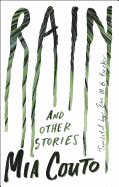
| Publisher: | Biblioasis | |
| Genre: | Short Stories (single author), Magical Realism, Literary, Fiction | |
| ISBN: | 9781771962667 | |
| Pub Date: | February 2019 | |
| Price: | $14.95 |
| Fiction |
by Mia Couto, trans. by Eric M.B. Becker
Long considered one of Mozambique's most prominent writers, Mia Couto (Woman of the Ashes, Confession of the Lioness) astonishes with his fiction collection, Rain and Other Stories. Written in the aftermath of his country's civil war, the stories were originally published in 1994 in Portuguese. This English edition was translated by journalist Eric M.B. Becker. Combining fabulism with pointed critiques of war, the collection reveals that Couto found his distinctive voice early in his career.
The opener, "The Waters of Time," tells the tale of a young boy who watches his grandfather dive into a river to give himself over to whatever spirits live there. Its stunning imagery draws power from unexpected comparisons: "I recall seeing an enormous white egret cross the sky. It looked like an arrow piercing the flanks of the afternoon, making all the firmament bleed." In another standout, "Felizbento's Pipe," war comes to a peaceful land. It begins with a government official telling an old man he must vacate his home. The man refuses, choosing instead to dig up the trees in his yard in protest. After days of this, he disappears into one of his holes with his favorite pipe, and years later, a small tree growing out of the hole puffs smoke at sunset.
Playful and poignant, Rain and Other Stories cements Couto's reputation as one of the finest writers in the Portuguese language, and proves Becker's talent as a discerning and perceptive translator. --Amy Brady, freelance writer and editor
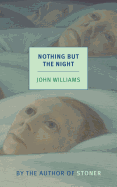
| Publisher: | NYRB Classics | |
| Genre: | Psychological, Family Life, General, Literary, Coming of Age, Fiction | |
| ISBN: | 9781681373072 | |
| Pub Date: | February 2019 | |
| Price: | $14.95 |
| Fiction |
by John Williams
In Nothing but the Night, John Williams's first novel, now reprinted by NYRB, a young man grapples with his repressed childhood trauma. Arthur Maxley exists in the realm of waking nightmare, imagining scenes of violence overlaid upon the raucous parties he attends in New York. The lonesome routine of his days is interrupted when his estranged father visits in an attempt to reconnect. Reeling from the encounter, Arthur descends even further into the dark and increasingly carnivalesque world of late-night Manhattan, seeking solace, with explosive results, in the bodies of others. There, he rediscovers not only the original trauma that led him to this moment, but his own ability to perpetuate it.
Written while Williams was serving in World War II and published in the war's immediate aftermath, Nothing but the Night is haunted by internalized violence. With winding, disjointed syntax and horror aesthetics, William's words craft the world Arthur sees as not "a social endeavor that had to do with flesh and blood" but "a dumb show, a horrible grotesque and childlike thing of terror with all the idiot simplicity of a marionette ballet." Each sentence trembles with rage and physicality that, as the book burrows deeper and deeper into Arthur's consciousness, slowly embeds itself within the reader's own perception. A more interior book than Williams's later Butchers Crossing or Stoner, Nothing but the Night offers a stripped-down look at a generation of hollowed-out Holden Caulfields who exist not in the world of intellectual promise or adventure, but in the blaring, unspeakable reality of their own minds. --Alice Martin, freelance writer and editor
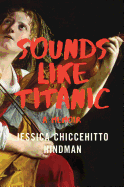
| Publisher: | W.W. Norton | |
| Genre: | Biography & Autobiography, Women, Philosophy & Social Aspects, Music, Personal Memoirs | |
| ISBN: | 9780393651645 | |
| Pub Date: | February 2019 | |
| Price: | $25.95 |
| Biography & Memoir |
by Jessica Chiccehitto Hindman
When college student Jessica Chiccehitto Hindman is hired as a violinist for "an award-winning ensemble," her intuition tells her something isn't quite right. "Professional ensembles do not place advertisements on college listservs," she writes in her hilarious memoir. Moreover, by Hindman's own description, she isn't even very good at playing the violin, despite 13 years of childhood lessons.
Hindman writes in an accessible, forthcoming and incredibly humorous style, contrasting her years growing up in Appalachia with her time spent touring the U.S. with the ensemble. Her lack of talent as a violinist doesn't matter to the Composer, the eccentric musician orchestrating what Hindman quickly discovers is an elaborate ruse. With the Composer at the helm, the ensemble's live performances--and their nationally televised PBS specials--consist of the group standing in front of dead microphones, lightly playing over loudly amplified instrumental recordings of the exact same songs. Most of their selections resemble those on the Titanic movie soundtrack, intended to appeal to the tastes of an unsuspecting yet adoring public.
Hindman's intent with Sounds Like Titanic isn't to expose the musical chicanery. Rather, she uses this experience as the stage for an insightful and reflective commentary on work, culture and women's issues. When she joins the Composer's national tour, she reconciles the grueling travel and performance schedule with her instilled work ethic and the unease of earning a considerable amount of money through false means. In an era when truth is incessantly questioned, Sounds Like Titanic resonates as a story ideal for this particular moment in time. --Melissa Firman
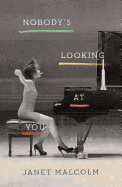
| Publisher: | Farrar, Straus and Giroux | |
| Genre: | Literary Collections, Essays | |
| ISBN: | 9780374279493 | |
| Pub Date: | February 2019 | |
| Price: | $27 |
| Essays & Criticism |
by Janet Malcolm
The journalist Janet Malcolm has weathered--or should that be courted?--her share of controversy throughout her storied career, but readers won't find much to get their dander truly up in her third essay collection, Nobody's Looking at You. Rest assured, this is no kinder, gentler Malcolm. (On the poet Ted Hughes's biographer: "That it was [Jonathan] Bate of all people who was chosen to write Hughes's biography only heightens our sense of Hughes's preternatural unluckiness.") But the feather-ruffling potential is restricted to unassuming moments, as when the liberal Malcolm calls for sympathy for a certain former governor of Alaska.
Nobody's Looking at You offers 18 essays culled from the holy trinity of literary periodicals: the New Yorker, the New York Review of Books and the New York Times Book Review. The pieces are bundled into three unnamed sections that might have been labeled New York's Finest (subjects include Eileen Fisher and Rachel Maddow), What Technology Has Wrought (the docuseries Sarah Palin's Alaska, e-mail etiquette) and Literary Criticism (Anna Karenina, Quentin Bell's Bloomsbury Recalled, Alexander McCall Smith's No. 1 Ladies' Detective Agency series). Malcolm's genius lies in seizing on subjects that the reader might not have realized badly needed examination. In "The Art of Testifying," she's like an ace commentator for the sporting event that is the confirmation hearings of three U.S. Supreme Court justices. And in "Three Sisters," through observing the daily ministrations of the sisters who own and run Manhattan's Argosy Bookshop, Malcolm tells nothing less than the story of American industry. --Nell Beram, author and freelance writer
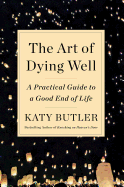
| Publisher: | Scribner | |
| Genre: | Self-Help, Biography & Autobiography, Emergency Medicine, Death, Grief, Bereavement, Personal Memoirs, Medical, Terminal Care | |
| ISBN: | 9781501135316 | |
| Pub Date: | February 2019 | |
| Price: | $26 |
| Psychology & Self-Help |
by Katy Butler
In The Art of Dying Well, Katy Butler (Knocking on Heaven's Door) provides a roadmap to navigating a good death. Despite the inevitability of death, she observes, most people remain unprepared for it. Advances in modern medicine help us live longer, but science "wards off death far better than it helps us prepare for peaceful ones." We find ourselves paralyzed by a bewildering, complex health care system that fails to support the physical, emotional and spiritual needs of the dying and their caregivers.
Chapters cover the stages of decline, beginning with the earliest signs in late middle age; checklists at the beginning of each chapter can help readers identify their stage. Butler stresses the importance of building a social "bank account" of friends, neighbors and family members early, to share in caregiving as you age. She discourages the use of "halfway technologies" that delay death but fail to restore health, favoring palliative care and a network of ancillary health-care workers that provide comfort. When decline is irreversible and death is imminent, say goodbye to loved ones, "enjoy your red velvet cake" and meet your demise on your own terms.
Confronting mortality and slowly losing cognitive and physical abilities can be a confusing and devastating experience for the dying and those who care for them. The Art of Dying Well is an empowering guide that clearly outlines the steps necessary to avoid a chaotic end in an emergency room and to prepare for a beautiful death without fear. --Frank Brasile, librarian
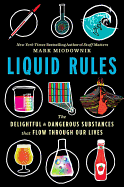
| Publisher: | Houghton Mifflin Harcourt | |
| Genre: | Chemistry, Applied Sciences, Science, General, Inorganic, History, Physics, Modern | |
| ISBN: | 9780544850194 | |
| Pub Date: | February 2019 | |
| Price: | $26 |
| Science |
by Mark Miodownik
For most people, a transatlantic flight is an opportunity to read a book, nap the time away, anxiously endure every bit of turbulence or wonder about the stranger sitting next to you. For materials scientist and engineer Mark Miodownik, it's an opportunity to consider the myriad roles liquids play on an aircraft, and beyond.
In his first book, Stuff Matters, Miodownik gave readers a tour of "dependable solid stuff." In Liquid Rules, he examines fluids, which, when not contained, are "seeping, corroding, dripping, and escaping our control." Kerosene's ability to be burned in a controlled manner not only revolutionized indoor lighting, but also enabled fuel for air travel. Miodownik soberly discusses how the explosive power of engine fuel caused the Twin Towers to collapse on 9/11.
While filling out a customs form with the humble ballpoint pen, he considers ink. While permanence is its greatest asset, efficiently controlling the flow of a substance that dries quickly took hundreds of years to perfect. Stickiness--not a property of liquid, but rather how it interacts with a specific material--explains how adhesives work and hold modern planes together. And, no less important, Miodownik describes the commonplace, such as how surface tension reveals the level of alcohol in a glass of wine, and how to enjoy the perfect cup of tea.
Liquids give us life, but they can also compromise it. The revolution in refrigeration led to chlorofluorocarbons (CFCs) that, when discarded, damage the atmosphere. And Miodownik looks beyond the plane to consider the destructive force of tsunamis and the impact of our water footprint. With this amiable delivery system, the science of liquid is anything but dry. --Frank Brasile, librarian
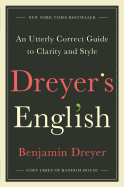
| Publisher: | Random House | |
| Genre: | Grammar & Punctuation, Form, General, Language Arts & Disciplines, Composition & Creative Writing, Humor, Essays | |
| ISBN: | 9780812995701 | |
| Pub Date: | January 2019 | |
| Price: | $25 |
| Starred | Reference & Writing |
by Benjamin Dreyer
There are many ways to write, but to communicate clearly requires consistency in style. Lucky for readers of Dreyer's English, Benjamin Dreyer, copy chief of Random House, has something more: panache. This is no stuffy grammarian's treatise on language and usage. Although unabashedly opinionated, Dreyer never claims to have all the answers. In fact, he openly discusses instances in which he has come to recognize his own errors over time (like the spelling of Danielle Steel's name). Maintaining that tone, he guides readers through the issues he frequently addresses, while conceding much else to higher powers like Merriam-Webster's Collegiate Dictionary and the Chicago Manual of Style.
This framework leaves plenty of room for fun. And, yes, as unlikely as it may sound, the mechanics of writing are consistently fun with Dreyer at the helm. Whether addressing punctuation, spelling, cliché or any number of pitfalls a writer or editor may encounter, he is ready with a sharp, memorable example. Explaining which clauses need to be set off with commas, he suggests Liz and her spouses as the best illustration: "Elizabeth Taylor's second marriage, to Michael Wilding [vs.] Elizabeth Taylor's second marriage to Richard Burton." One little comma can tell an entirely different story.
While it's a copy editor's job to be a stickler, Dreyer also makes clear that one can carry peeves and peccadilloes right off a cliff if one isn't careful. In a footnote, he questions a certain magazine's feverish use of diaereses and hyphens: "If you're going to have a house style, try not to have a house style visible from space."
Even as language continues to evolve, let's hope Dreyer's English never goes out of style. --Dave Wheeler, associate editor, Shelf Awareness

| Publisher: | Balzer + Bray | |
| Genre: | Emotions & Feelings, People & Places, Music, Homelessness & Poverty, United States - African American, Social Themes, Young Adult Fiction, Prejudice & Racism, Performing Arts | |
| ISBN: | 9780062498564 | |
| Pub Date: | February 2019 | |
| Price: | $18.99 |
| Starred | Children's & Young Adult |
by Angie Thomas
In Coretta Scott King and Printz honoree author Angie Thomas's (The Hate You Give) second novel, On the Come Up, high school junior Brianna "Bri" Jackson is an aspiring MC working toward her dream of rap superstardom.
As Bri waits anxiously for the call that will put her in the Ring for her first rap battle, she explains in the first line of the book that she "might have to kill somebody tonight." She gets the call, enters the Ring and does, indeed, annihilate her competition: Milez "with a z," an uninspired challenger whose "Swagerific" bop is hot on the radio. Bri's victory is short-lived, though, when she's assaulted the next day by the security guards at her school. While the video of Bri's performance in the Ring should be going viral, a video of her assault gains traction instead.
On the Come Up takes place almost a year after the police shooting and riots that shook the Garden Heights community in Thomas's THUG. Bri's experiences with the often-overwhelming pressures of being black and poor are intensified by the fact that she is the daughter of a recovering addict and a murdered "underground rap legend." Her narrative is steady and cohesive, even as she is compelled to use her energy to confront institutional violence instead of to build her dream. Thomas's work is multifaceted and unusual; intimate details of life in an underserved and impoverished community are combined with the unjust social and physical brutalities those communities face at the hands of presumed protectors. This book gazes directly at the deeply emotional, moral challenges teens like Bri--teens who dream of hot water and full fridges--face when they are trying to come up. --Breanna J. McDaniel, freelance reviewer
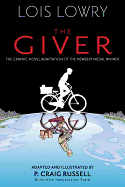
| Publisher: | Houghton Mifflin Harcourt | |
| Genre: | Dystopian, Fantasy, Coming of Age, Young Adult Fiction, Comics & Graphic Novels | |
| ISBN: | 9780544157880 | |
| Pub Date: | February 2019 | |
| Price: | $22.99 |
| Children's & Young Adult |
by Lois Lowry, P. Craig Russell, illust. by Galen Showman, Scott Hampton
Lois Lowry's Newbery Medal-winning middle-grade novel The Giver has been read by millions and reimagined many times over. The latest addition to this line of innovative versions is P. Craig Russell's mesmerizing graphic novel.
As Lowry herself says in a conversation found in the back of the book, Russell's graphic novel sticks "very closely to the original." It is in this extremely faithful adaptation that much of the graphic novel's beauty can be found--Russell's stripping down of text is deliberate, the scenes he chooses to depict give a full view of the story while remaining firmly rooted in the graphic format. This dedicated visual retelling also gives depth, highlighting some of the more mature, intense aspects of the novel. One such example is Jonas's education on what "release" is: Russell dedicates an entire double-page spread to the process of injecting poison into the baby's "teeny-weeny" veins; another two-page spread to boxing up the body and placing it in a "waste" disposal.
Additionally, Russell's envisioning of Jonas's "capacity to see beyond"--Jonas's ability to see snippets of color in a black-and-white world--is gracefully wrought. As Jonas absorbs more memories, the bold colors of our world slowly creep in, until the final pages are entirely in color. To accomplish this, Russell used a technique that creates a "blue/silvery tonal look" which, as he says in an included interview, gives "life to the page" even as it gives "the look of a world without color." The Giver Graphic Novel is a worthy adaptation, similar yet creative enough to win over those already familiar with the story while also inviting new readers in. --Siân Gaetano, children's and YA editor, Shelf Awareness